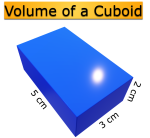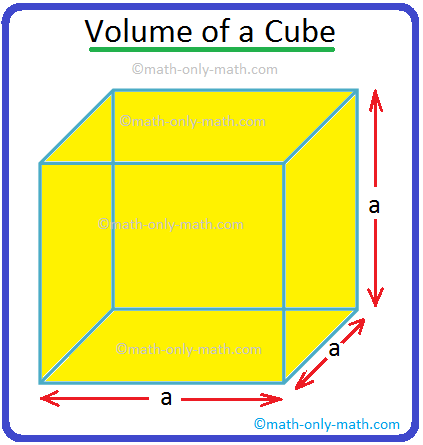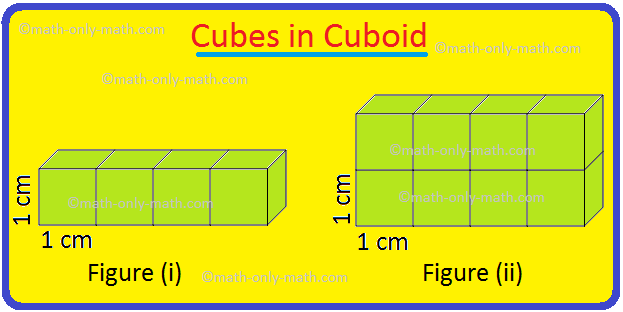Subscribe to our ▶️ YouTube channel 🔴 for the latest videos, updates, and tips.
Home | About Us | Contact Us | Privacy | Math Blog
What is Variation
We will learn about what is variation, direct variation, indirect variation and joint variation.
Variable and Constant:
In Mathematics, we usually deal with two types of quantities-Variable quantities (or variables) and Constant quantities (or constants). If the value of a quantity remains unaltered under different situations, it is called a constant. On the contrary, if the value of a quantity changes under different situations, it is called a variable.
For example: 4, 2.718, 22/7 etc. are constants
while speed of a train, demand of a commodity, population of a town etc. are variables.
In a mathematical equation where a relationship is established for some type of parameters normally two types quantities exist. One is constant that doesn’t change with the changes of other parameters in the equation and another is the variables which change for different situations. The changing of variable parameters is called as variation.
In problems relating to two or more variables, it is seen that the value of a variable changes with the change in the value ( or values ) of the related variable (or variables). Suppose a train running at a uniform speed of v km./h. travels a distance of d km. in t hours. Obviously, if t remains unchanged then v increases or decreases according as d increases or decreases. But if d remains unchanged, then v decreases or increases according as t increases or decreases. This shows that the change in the value of a variable may be accompanied differently with the change in the values of related variables. Such relationship with regards to the change in the value of a variable when the values of the related variables change, is termed as variation.
This can be explained by an example of simple equation y = mx where m is a constant. If we assume that the value of m as 5 then the equation becomes as y = 5x.
When x = 1, y = 1 × 5 = 5
When x = 2, y = 2 × 5 = 10
When x = 3, y = 3 × 5 = 15
Simply the value of y is changing with the different values of x.
This is the variation of y with different values of x and similarly it can be shown that with different values of y the value of x changes.
Variation can be of different types according the pattern of changing or relationships of variables.
Direct
Variation: In a variation if variables change proportionately
i.e. either increase or decrease together then it is called as direct
variation. If X is in direct variation with Y, it can be symbolically written
as X α Y.
Inverse or Indirect Variation: In inverse or indirect variation the variables change disproportionately or when one of the variables increases, the other one decreases. So behavior of the variables is just the opposite of direct variations. That is why it is called as Inverse or indirect variation. If X is in indirect variation with Y, it can be symbolically written as X α 1Y.
Joint Variation: If more than two variables are related directly or one variable changes with the change product of two or more variables it is called as joint variation. If X is in joint variation with Y and Z, it can be symbolically written as X α YZ.
Combined Variation: Combined variation is a combination of direct or joint variation, and indirect variation. So in this case three or more variables exist. If X is in combined variation with Y and Z, it can be symbolically written as X α YZ or X α ZY.
Partial Variation: When two variables are related by a formula or a variable is related by the sum of two or more variables then it is called as partial variation. X = KY + C (where K and C are constants) is a straight line equation which is a example of partial variation.
Here are some examples of direct and inverse variations.
Direct Variation: Perimeter of circle C= 2πr where 2 and π are constants and C increases if r increases, decreases if r decreases. So C is in direct variation with r.
Inverse Variation: If I need to go a distance of S with velocity V and time T then T = SV. Here the distance S is constant. If velocity increases it will take less time so T decreases. So T is in indirect variation with V.
We will discuss more about such variations, which are classified into three types:
(1) Direct Variation
(2) Inverse Variation and
(3) Joint Variation.
● Variation
- What is Variation?
- Direct Variation
- Inverse Variation
- Joint Variation
- Theorem of Joint Variation
- Worked out Examples on Variation
- Problems on Variation
11 and 12 Grade Math
From What is Variation to Home Page
Didn't find what you were looking for? Or want to know more information about Math Only Math. Use this Google Search to find what you need.
Recent Articles
-
Worksheet on Area, Perimeter and Volume | Square, Rectangle, Cube,Cubo
Jul 25, 25 12:21 PM
In this worksheet on area perimeter and volume you will get different types of questions on find the perimeter of a rectangle, find the perimeter of a square, find the area of a rectangle, find the ar… -
Worksheet on Volume of a Cube and Cuboid |The Volume of a RectangleBox
Jul 25, 25 03:15 AM
We will practice the questions given in the worksheet on volume of a cube and cuboid. We know the volume of an object is the amount of space occupied by the object.1. Fill in the blanks: -
Volume of a Cuboid | Volume of Cuboid Formula | How to Find the Volume
Jul 24, 25 03:46 PM
Cuboid is a solid box whose every surface is a rectangle of same area or different areas. A cuboid will have a length, breadth and height. Hence we can conclude that volume is 3 dimensional. To measur… -
Volume of a Cube | How to Calculate the Volume of a Cube? | Examples
Jul 23, 25 11:37 AM
A cube is a solid box whose every surface is a square of same area. Take an empty box with open top in the shape of a cube whose each edge is 2 cm. Now fit cubes of edges 1 cm in it. From the figure i… -
5th Grade Volume | Units of Volume | Measurement of Volume|Cubic Units
Jul 20, 25 10:22 AM
Volume is the amount of space enclosed by an object or shape, how much 3-dimensional space (length, height, and width) it occupies. A flat shape like triangle, square and rectangle occupies surface on…





New! Comments
Have your say about what you just read! Leave me a comment in the box below. Ask a Question or Answer a Question.